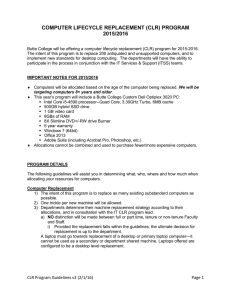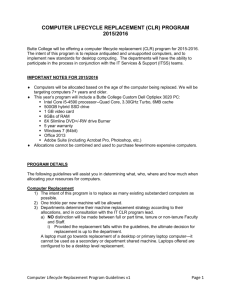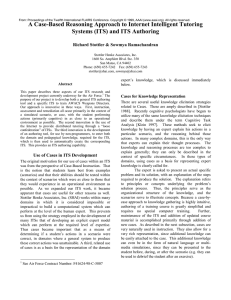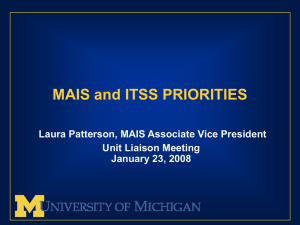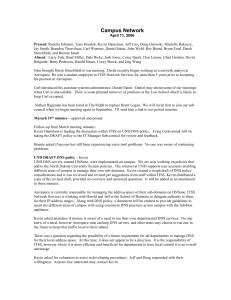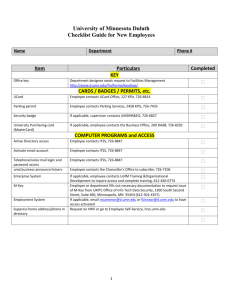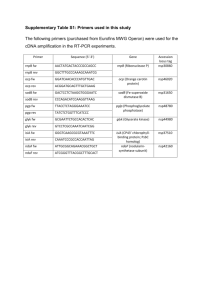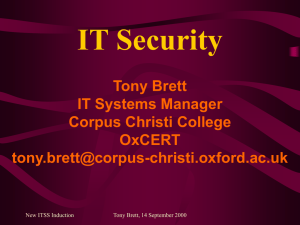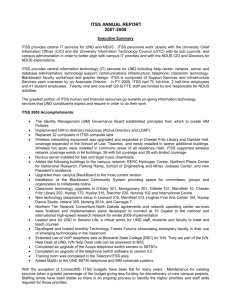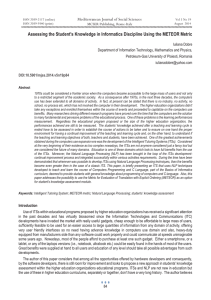ITSS Technology Strategy Principles
advertisement
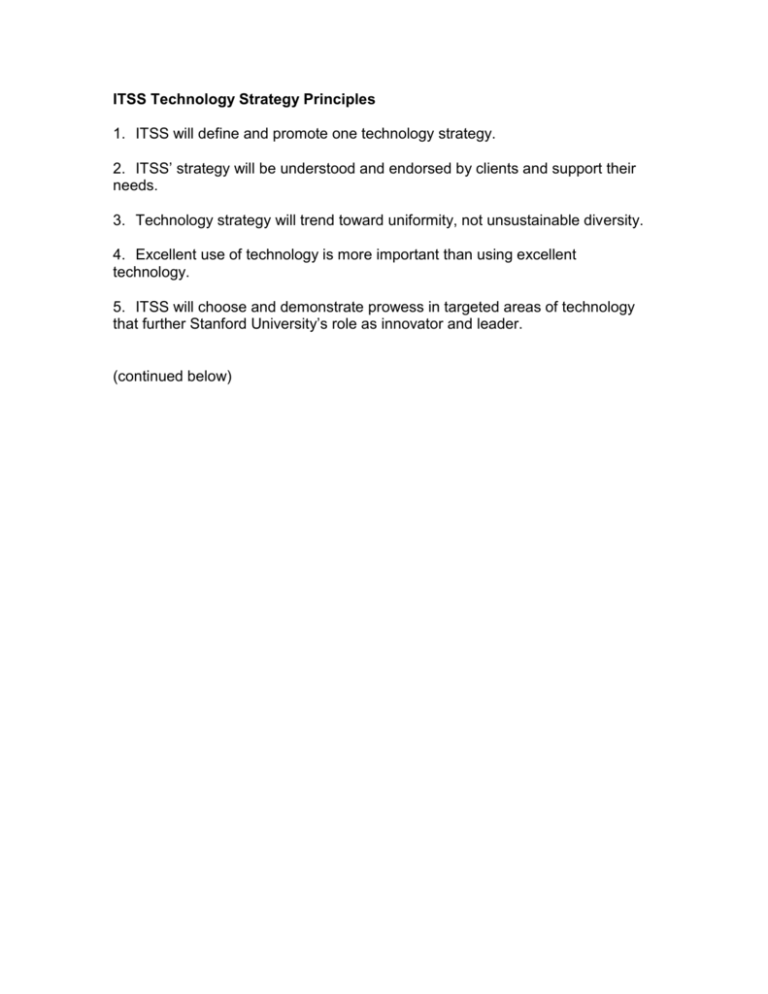
ITSS Technology Strategy Principles 1. ITSS will define and promote one technology strategy. 2. ITSS’ strategy will be understood and endorsed by clients and support their needs. 3. Technology strategy will trend toward uniformity, not unsustainable diversity. 4. Excellent use of technology is more important than using excellent technology. 5. ITSS will choose and demonstrate prowess in targeted areas of technology that further Stanford University’s role as innovator and leader. (continued below) Implementing the Technology Strategy Principles 1. ITSS will define and promote one technology strategy. A single report will be published and regularly updated which includes what technologies (i.e. products, practices, implementations) ITSS uses and promotes. This report must give current technology uses and the strategy for future direction. The ITSS strategy will be the responsibility of the ITSS Strategist in conjunction with Stanford’s academic and administrative IT leaders. 2. ITSS’ strategy will be endorsed by clients and support their needs. There must be a documented connection between technology strategy for ITSS and client support for that direction. If the technology strategy is not reviewed and endorsed by clients of ITSS, it is not valid. An advisory board will be formed which will be charged with regular review of ITSS’ strategy and inclusion of client input. It is critical that ITSS Technology Strategy answer client questions clearly and demonstrably. 3. Technology strategy will trend toward uniformity, not unsustainable diversity. Technology implementations and product diversity will be actively controlled by the ITSS published technology strategy. This strategy will deliberately and openly make choices limiting the branching of IT architectures, product selections and operational implementations. 4. Excellent use of technology is more important than using excellent technology. The ITSS strategic master plan will provide a framework from which IT project managers, developers, systems administrators, etc. will work within. This will free them from having to reinvent commonly used technologies. The focus will be on the quality of the implementation and resulting service rather than on using the latest technology. 5. Focal areas of technology prowess are identified and supported. Stanford University is among an elite echelon of academic institutions in the world. The expectations of Stanford’s IT leadership are correspondingly high. ITSS technology strategy must respond to this expectation by choosing specific target technologies which demonstrate this leadership prowess. Concrete steps Short to medium term deliverables Formation of core of advisory board within n months/weeks When the draft of strategy will be completed Leadership Informing Auditing After 6 months of analysis define selected areas of prowess Areas of IT Architectural concentration working as a team: Networking Infrastructure Application Data What is needed from each of these roles: Comprehensive understanding in respective technology concentration (not just within division of ITSS) Ability to see more broadly outside Authority to make decisions of broad implication Commitment to work together and integrate directions to form one strategy Seen as credible and fair by technical staff What is needed from the Executive Directors for these roles to succeed: Support the recommendations of these technology leaders and the collective decisions Entree into forums where campus IT decision makers and stakeholders work Enforce the endorsed strategy policy Enunciate one uniform technology strategy
